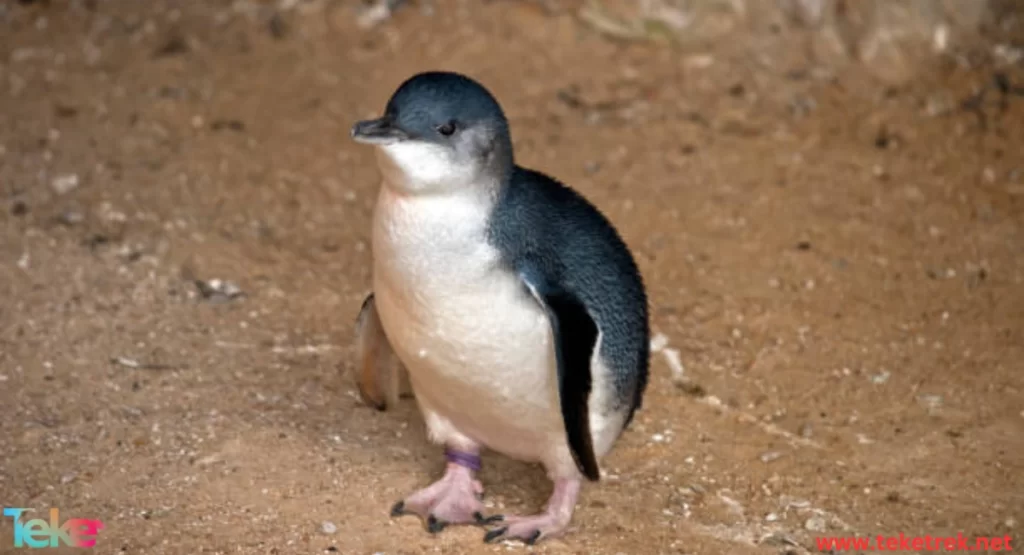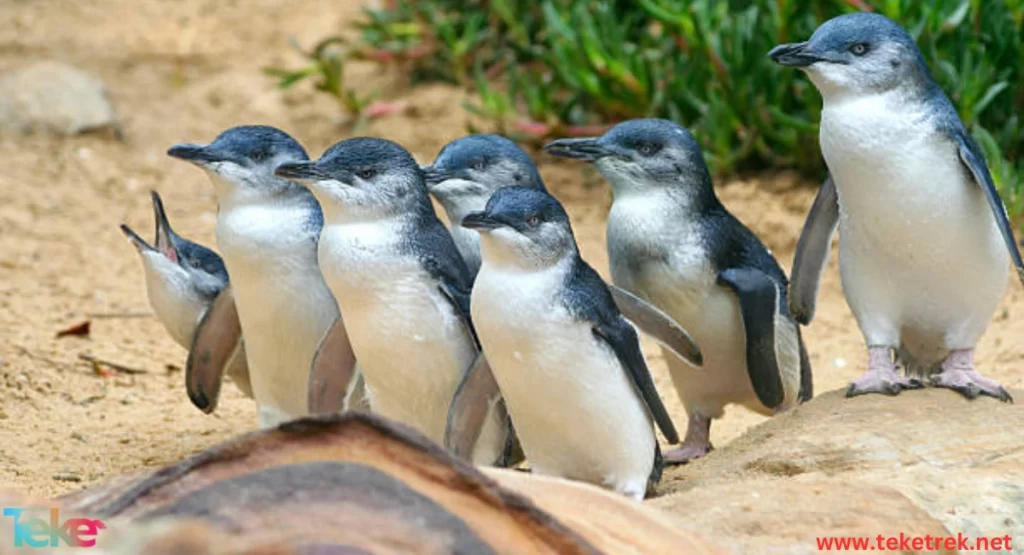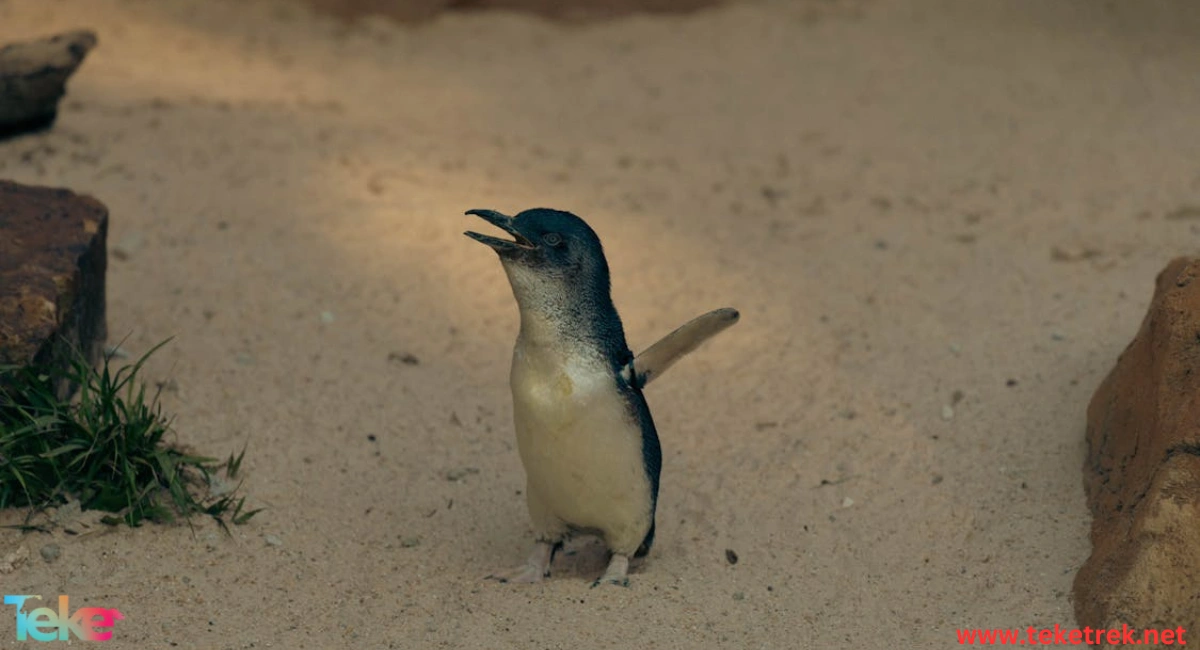It is one of the smallest species of penguins, it is often called Fairy penguins, little blue penguins or blue penguins due to their blue feathers.
Let’s learn more about it from teketrek.
characteristics and facts about The Little Penguin
On average, it grows to about 43.33 cm in length, although specific measurements may vary depending on the subspecies.
Belonging to the Spheniscidae family and Eudyptula genus, the scientific name of the Little Penguin is Eudyptula minor.
Certain glands in the Little Penguin’s body release oil that covers its feathers, making the penguin more resistant to water and wind.
The Little Penguin exhibits various behaviors and interesting facts:
It spends most of its time either feeding in the sea or cleaning its feathers with oil it produces.
When diving into the water, the Little Penguin expends a lot of energy and can reach depths of up to 20 meters.
It is a nocturnal, territorial species with different ways of displaying aggression, including warning signals, approaching intruders, short physical contacts, and physical attacks using its beak and flippers accompanied by various sounds.
Little Penguins can undertake long journeys of up to 700 kilometers.
It leaves its burrows at sunrise to forage for food throughout the day and return to their nests after dusk.
Little Penguins nest near the sea in burrows dug by birds or other species, caves, rock crevices, under tree trunks, or various human-made structures.
They live in groups, with colony sizes reaching up to 5000 penguins in one group.

The Little Penguin specification
The Little penguin size: The Little Penguin stands at a height ranging from 30 to 33 cm and weighs an average of 1.5 kg.
The Beak: It has a black or gray beak measuring around 4 cm in length.
The Color: Its wings, head, and back are blue, with the front part distinguished by white coloring.
The Legs: The penguin’s legs are light pink, and its eyes can reflect shades of gray or blue.
The Feathers:
The color of the Little Penguin’s feathers changes with age, with mature individuals tending to lose intensity and becoming more brownish in color.
The body: its body contains a layer of fat beneath the skin known as blubber. This layer is covered by down feathers, followed by outer feathers that provide insulation and warmth.
Fascinating World of The Honey Bee: Nature’s Tiny Miracle Worker
The Little penguin habitat
Little Penguins are found in coastal areas and shallow waters, as well as in New Zealand and southern Australia.
They also inhabit some coasts of South Africa and the Chilean Patagonia region.
The habitat of the Little Penguin includes shrubs and rocky coastlines.
They benefit from cracks in rocks and caves to live and protect themselves from the sun’s rays.
What does the little blue penguin eat
The diet of the Little Penguin consists of fish such as red cod, squid, octopus, and some marine animals.
Little Penguins play an important role in the marine ecosystem as predators of parasites that can affect other animals.
Labrador Retrievers: The Ultimate Family Companion and Adventure Buddy!
Reproduction Stages of the Little Penguin
Little Penguins form lifelong pairs. To start courtship, the male Little Penguin performs physical movements, vocalizations, and extends its flippers and neck.
Inside burrows, caves, or rock crevices, they lay one or two eggs, each weighing around 50 grams. The eggs are incubated for 30 to 40 days. The chicks born have thin and rare feathers.
After 80 days of age, the young penguin can take care of itself, feed itself, and reach sexual maturity at three years old.

FAQs about the Little Penguin
Is the Little Penguin endangered?
At the adult stage, the main threats to the Little Penguin are killer whales, sharks, and leopard seals. Dogs, rats, foxes, and skuas are major threats to chicks that are still inside the egg.
What is the Little penguin lifespan?
Little Penguins live for approximately six years.
What is the swimming speed of the Little Penguin?
The Little Penguin swims at around 2.5 kilometers per hour.
What is special of the little penguin?
The Little Penguin can travel more than 1,000 km in its first year of life. It grows to a height of 40 – 45 cm and can weigh up to 1.2 kg. In contrast, the Emperor Penguin of Antarctica stands over 110 cm tall and can weigh up to 30 kg, making it significantly larger than the Little Penguin.!
What is the population of the little penguin?
approximately 350-600,000 birds.
Are little penguins rare?
The species is not considered endangered in New Zealand, except for the white-flippered subspecies, which is found only on Banks Peninsula and nearby Motunau Island.Since the 1960s, the mainland population has declined by 60-70%; though a small increase has occurred on Motunau Island.
In conclusion, we must say that this bird is unique in its shape, color, and appearance. Efforts must be made to protect it, as Little Penguins are protected from various threats under different legislations in different jurisdictions.
References





